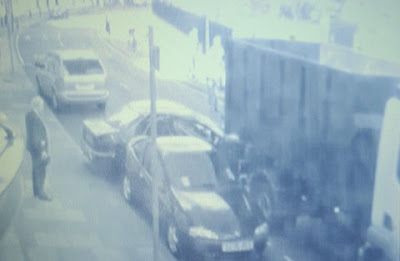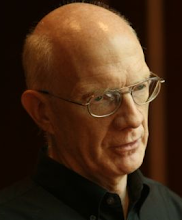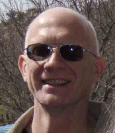David Byrne, who has received coverage in this blog before, has become the de facto spokesman for cyclists in New York City and beyond. Normally, I'm the type who resents (to no small degree) being spoken for, but Byrne's eloquence in his review (in today's New York Times Book Review) of Jeff Mapes' PEDALING REVOLUTION: How Cyclists Are Changing American Cities is so compelling that I'm inclined to settle and say, "I'm happy with Byrne being the voice of my generation."
become the de facto spokesman for cyclists in New York City and beyond. Normally, I'm the type who resents (to no small degree) being spoken for, but Byrne's eloquence in his review (in today's New York Times Book Review) of Jeff Mapes' PEDALING REVOLUTION: How Cyclists Are Changing American Cities is so compelling that I'm inclined to settle and say, "I'm happy with Byrne being the voice of my generation."
According to the NYT-Book Review editors, Byrne is himself writing a book on bicycling and cities and their intersection called Bicycle Diaries in September. This will be worth reading, as city (and suburban) planning and the impact of cycling on it (and vice versa) is a topic I'm finding more and more interesting.
There is one egregious flaw in Byrne's review. He says therein,
 become the de facto spokesman for cyclists in New York City and beyond. Normally, I'm the type who resents (to no small degree) being spoken for, but Byrne's eloquence in his review (in today's New York Times Book Review) of Jeff Mapes' PEDALING REVOLUTION: How Cyclists Are Changing American Cities is so compelling that I'm inclined to settle and say, "I'm happy with Byrne being the voice of my generation."
become the de facto spokesman for cyclists in New York City and beyond. Normally, I'm the type who resents (to no small degree) being spoken for, but Byrne's eloquence in his review (in today's New York Times Book Review) of Jeff Mapes' PEDALING REVOLUTION: How Cyclists Are Changing American Cities is so compelling that I'm inclined to settle and say, "I'm happy with Byrne being the voice of my generation."According to the NYT-Book Review editors, Byrne is himself writing a book on bicycling and cities and their intersection called Bicycle Diaries in September. This will be worth reading, as city (and suburban) planning and the impact of cycling on it (and vice versa) is a topic I'm finding more and more interesting.
There is one egregious flaw in Byrne's review. He says therein,
I can ride till my legs are sore and it won’t make riding any cooler, but when attractive women are seen sitting upright going about their city business on bikes day and night, the crowds will surely follow.I must insist here that it can be only false modesty that allows Byrne to assert that his personal involvment "won't make riding any cooler".








